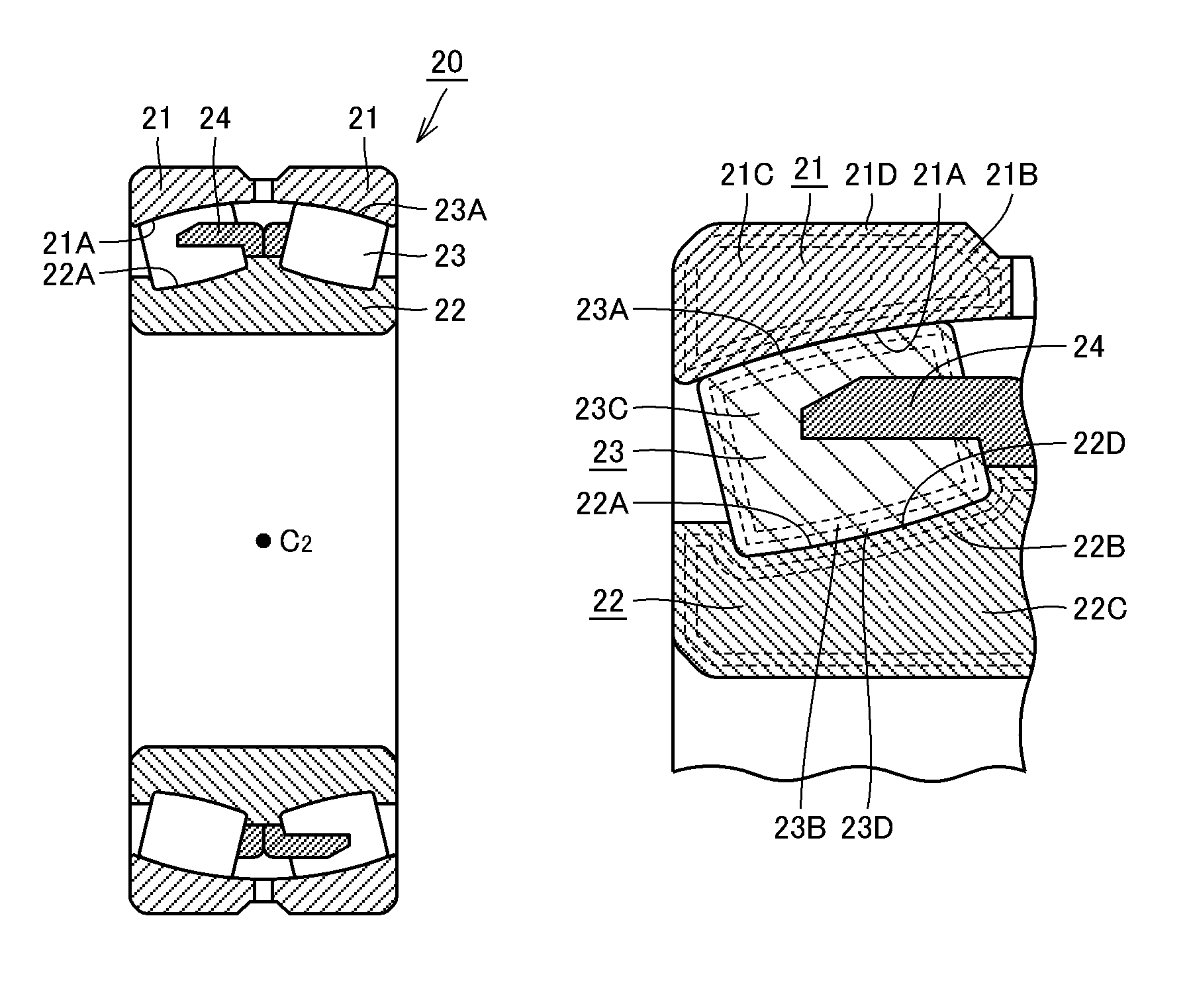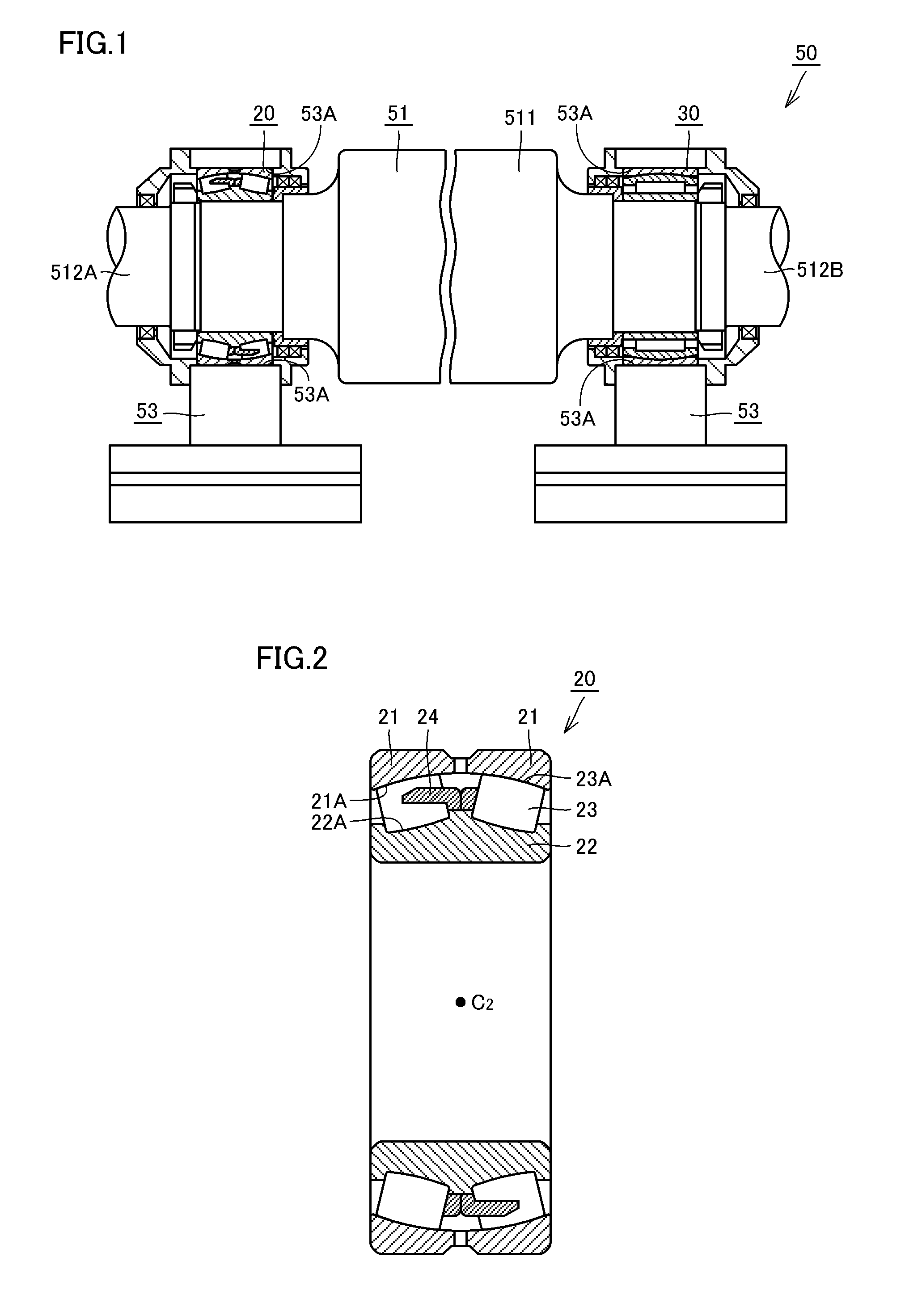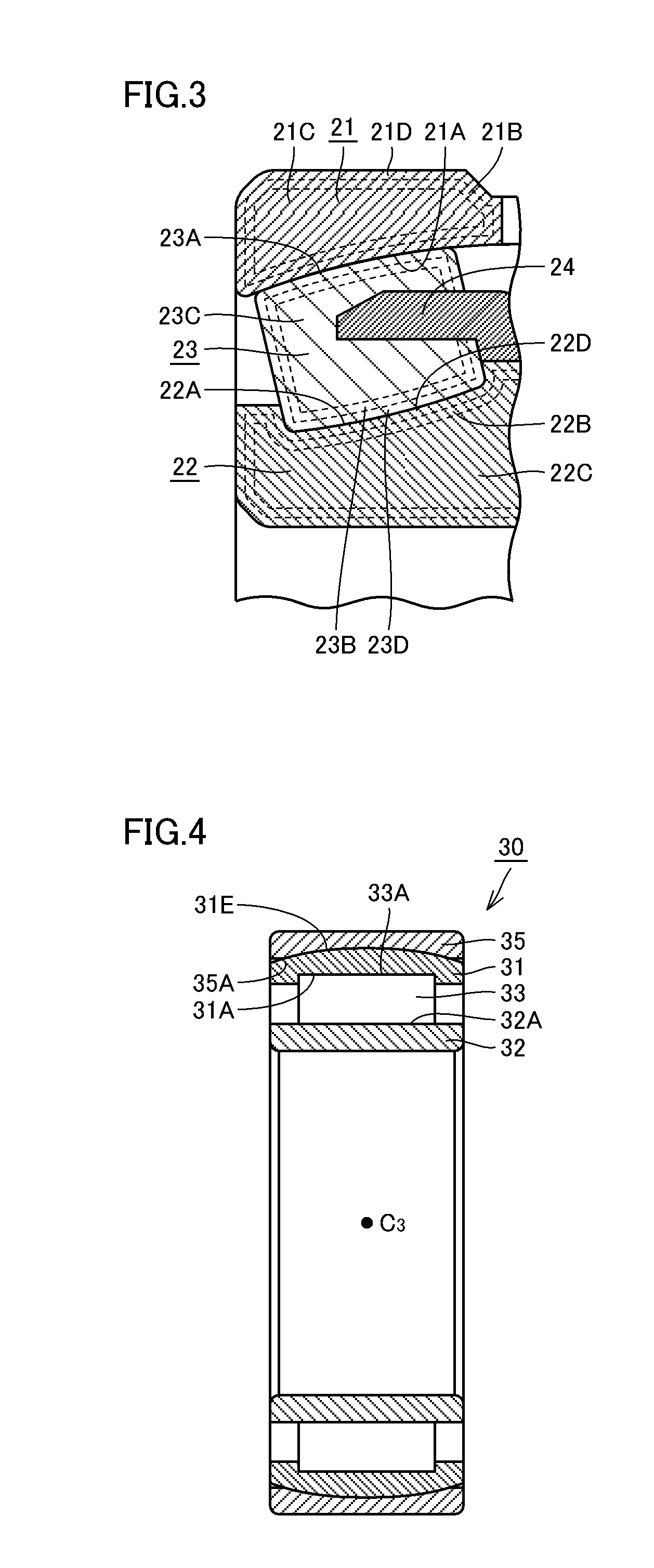Bearing component, rolling bearing, and method for producing bearing component
a technology of bearing components and components, applied in the direction of superimposed coating process, heat treatment apparatus, furnaces, etc., can solve the problems of increasing wear, thermal expansion, warping, etc., and achieves the effect of reducing the amount, reducing the amount, and large fracture toughness valu
- Summary
- Abstract
- Description
- Claims
- Application Information
AI Technical Summary
Benefits of technology
Problems solved by technology
Method used
Image
Examples
example 1
[0102]Hereinafter an example 1 will be described. An experiment was performed to verify a relationship between surface concentration of nitrogen and wear resistance in order to quantitatively verify an effect of nitrogen solved in steel to reduce / prevent wear to know surface concentration of nitrogen required to cause early severe-to-mild wear transition. The experiment was conducted in the following procedure.
[0103]In the experiment, 5 types of steel indicated below in a table 1 were used as source materials. Note that table 1 indicates numerical values each representing an element's content in % by mass. Furthermore, the symbol “-” indicates that the corresponding element is not added and a remainder is formed of iron and an impurity.
[0104]
TABLE 1type of steelCSiMnNiCrMoVex. A ofSCM 4200.20.30.80.11.2 0.15—presentinventionex. B ofSNCM 4200.20.250.61.60.50.2—presentinventioncomparativeSUJ 21.00.20.40.11.4——ex. AcomparativeSUJ 2 + C1.21.00.30.81.5——ex. Badded steelcomparativeV added...
example 2
[0114]An example 2 will now be described. An experiment was conducted to verify why increased surface concentration of nitrogen leads to increased wear resistance. More specifically, a material was carburized to prepare a test piece and an identical material was carbonitrided to prepare another test piece, and the test pieces underwent a wear test to examine how the amount of each test piece worn varies with time to confirm transition from severe wear to mild wear. The experiment was conducted in the following procedure.
[0115]Initially, JIS SUJ2 and SCM420 were prepared as steel materials serving as source materials, and shaped similarly as done in example 1 to obtain shaped bodies. The SUJ2 shaped body was normally immersion-quenched (or underwent standard quenching) to provide a test piece. The SUJ2 shaped body was also carbonitrided and quenched to provide another test piece. The SCM420 shaped body was carburized and quenched to provide a test piece. The SCM420 shaped body was al...
example 3
[0121]An example 3 will now be described.
[0122]An experiment was conducted to examine a heat treatment method for providing a nitrogen concentration equal to or larger than 0.3% by mass at surfaces of bearing components formed of SCr420, SCM420 and SNCM420 or a similar standard carburizing steel (an alloyed steel for mechanical structure use as defined by JIS G4053).
[0123]Initially, an investigation was conducted to obtain a relationship between a ratio of NH3 introduced into a heat treatment furnace and undecomposed ammonia concentration in the atmosphere internal to the furnace (hereinafter also referred to as in-furnace NH3 gas concentration) for atmospheric temperatures of 850° C. and 940° C. The experiment was conducted with a batch furnace having a volume of 120 L. Furthermore, the atmospheric temperature of 850° C. is a temperature assumed as a temperature applied to carbonitride high carbon chromium bearing steel having a carbon content of approximately 1% by mass (e.g., SUJ...
PUM
| Property | Measurement | Unit |
|---|---|---|
| specific wear rate | aaaaa | aaaaa |
| temperature | aaaaa | aaaaa |
| temperature | aaaaa | aaaaa |
Abstract
Description
Claims
Application Information
 Login to View More
Login to View More - R&D
- Intellectual Property
- Life Sciences
- Materials
- Tech Scout
- Unparalleled Data Quality
- Higher Quality Content
- 60% Fewer Hallucinations
Browse by: Latest US Patents, China's latest patents, Technical Efficacy Thesaurus, Application Domain, Technology Topic, Popular Technical Reports.
© 2025 PatSnap. All rights reserved.Legal|Privacy policy|Modern Slavery Act Transparency Statement|Sitemap|About US| Contact US: help@patsnap.com



